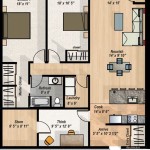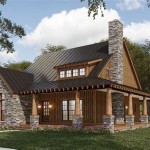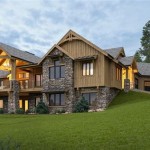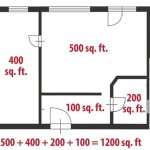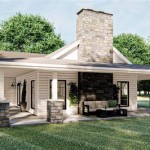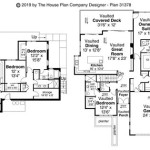Camp House Plans: A Guide for Building the Perfect Retreats
The dream of a secluded cabin in the woods, a lakeside retreat, or a mountainside getaway is a common one. These idyllic escapes offer a chance to reconnect with nature, escape the hustle and bustle of daily life, and create lasting memories. Bringing this vision to life requires careful planning, and this starts with the right camp house plans. Building a camp house is different than building a traditional home. The design must consider the unique challenges of the site, the desired level of comfort and amenities, and the overall purpose of the retreat.
Understanding Your Needs and Site
The first step in the design process is understanding your needs and the capabilities of your chosen site. Consider the following:
- Purpose of the Camp House: Will it be a weekend getaway for a family, a secluded writing retreat, a base camp for outdoor adventures, or a permanent residence?
- Desired Level of Comfort: Do you envision a rustic log cabin with minimal amenities or a more luxurious retreat with modern conveniences?
- Site Location: Is the site accessible year-round, or will it be used seasonally? What are the terrain and weather conditions? Is there access to water and electricity?
- Budget: Set a realistic budget and ensure you have accounted for all costs, including construction, materials, permits, and utilities.
- Lifestyle: What activities will you enjoy at the camp house? This can influence the size and layout of the space.
Once you have a clear understanding of these factors you can begin to conceptualize the ideal camp house plan.
Key Elements of Camp House Plans
Camp house plans need to address the specific needs of the location and intended use. These plans often include:
1. Size and Layout
Camp house plans typically prioritize functionality over square footage. The design should maximize the use of space while minimizing the environmental impact. Consider an open floor plan with multi-functional areas. A small footprint allows for maximum natural light and minimizes the need for extensive heating or cooling systems. Additionally, the layout should be adaptable to changing needs and accommodate outdoor living spaces.
2. Energy Efficiency
Off-grid living is often a key component of camp house design. Plans should include efficient heating and cooling systems, solar panels for electricity generation, and water harvesting methods. Sustainable building materials should also be considered, such as recycled lumber, reclaimed wood, or locally sourced stone. These elements will contribute to a more sustainable and environmentally responsible retreat.
3. Outdoor Living Spaces
Outdoor living is an integral part of the camp house experience. Incorporate spacious decks, porches, or patios for dining, relaxing, and enjoying the surrounding landscape. Consider a fire pit for evening gatherings and a screened-in porch to provide respite from insects. The proximity of these spaces to the interior of the camp house will contribute to a seamless transition between indoors and outdoors.
4. Integration with the Landscape
Camp house plans should aim to blend seamlessly with the surrounding environment. Use natural materials, incorporate native landscaping, and design the structure to minimize its visual impact on the landscape. Consider the orientation of the building to maximize natural light and ventilation. The goal is to create a retreat that feels connected to the environment and enhances its beauty rather than disrupting it.
5. Adaptability and Flexibility
Camp house plans should be flexible and adaptable to future needs. Consider features that can be easily modified or expanded, such as open floor plans, modular construction, or prefabricated components. This allows for future renovations or additions that can accommodate changes in lifestyle or family size. Flexibility in the design ensures the camp house remains a valuable and enjoyable retreat for many years.
By carefully considering these key elements, you can create camp house plans that will lead to a truly unique and fulfilling retreat.

11 Free Small Cabin Plans With Printable Log Connection

A Frame House Plans Everything You Need To Know Field Mag

Cool A Frame Tiny House Plans Plus Cabins And Sheds Craft Mart

A Frame House Plans Everything You Need To Know Field Mag

Cool A Frame Tiny House Plans Plus Cabins And Sheds Craft Mart

Tree House Ideas To Inspire You Forbes Home

This A Frame In Puget Sound Is Retreat From Modern Life

Tree House Ideas To Inspire You Forbes Home

70 Tiny House Designs That Have Everything You Want

Cool A Frame Tiny House Plans Plus Cabins And Sheds Craft Mart
Related Posts

